





Dry shade can make for a gardening challenge: no sun, no lawn. And because it's dry, most common shade plants (which are native to moist, woodland conditions) fail to thrive. Pick the right plants, however, and you can create a beautiful planting even in challenging conditions.
Start by amending the soil with organic matter, such as compost. Organic matter will help the ground hold moisture longer and provide a hospitable environment for plant roots. You'll also find that your dry shade plants will perform best if you continue to add organic matter every year.
Get your plants off to the best start possible by keeping them well-watered the first year or two. Most of the varieties listed here tolerate dry soil but do best in moist, well-drained soil. A good supply of water will help them get established in your landscape.
continue reading below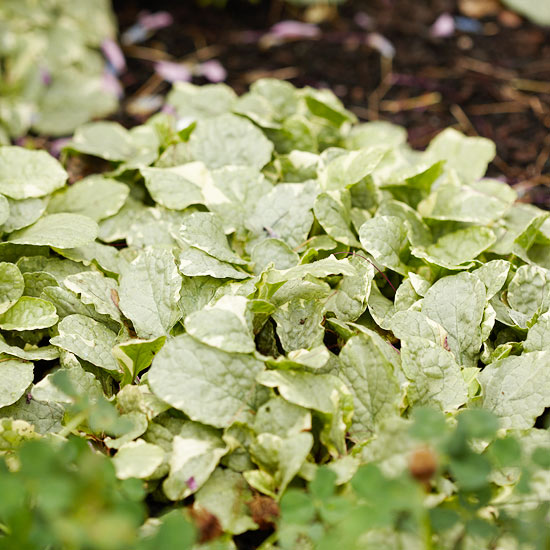
Ajuga
Ajuga is a perennial with pretty flowers and fantastic foliage. I like it more for its foliage because you get to enjoy the effect all spring, summer, and fall instead of just early spring, when the spikes of cobalt-blue flowers pop up like lighthouses over a sea of leaves.
You should be able to find many varieties of ajuga available at your local garden center. My favorites offer a dense, almost weed-smothering mat of variegated foliage; you can't go wrong with 'Burgundy Glow', for example, and its silvery-green leaves marked with pink, burgundy, and white. 'Golden Glow' bears light green leaves edged in creamy gold, and 'Silver Beauty' offers white edges around the leaves. If variegation doesn't suit your tastes, Black Scallop ('Binblasca') features large purple leaves that have a unique shine to them; Chocolate Chip ('Valfredda') has small, narrow green leaves heavily flushed burgundy purple.
Ajuga tolerates dry shade but thrives in moist, well-drained soil. You typically see the richest foliage colors if the plant gets a couple of hours of direct sunlight a day.
Learn more about ajugas.
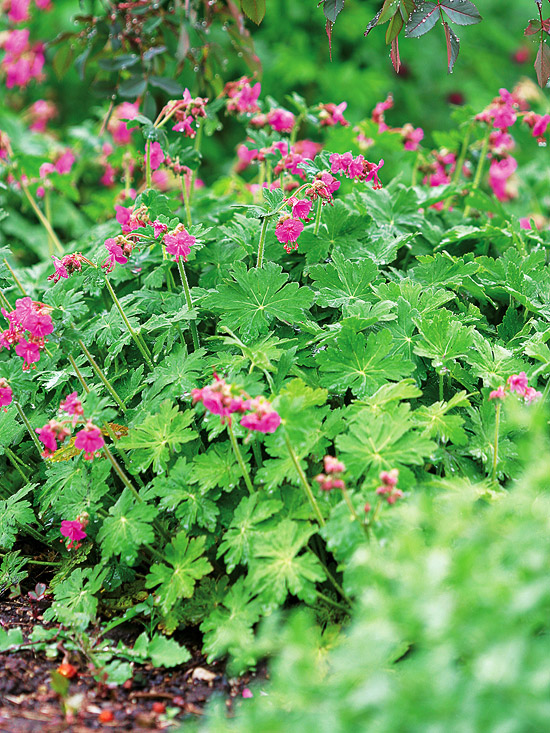
Bigroot Geranium
One of the very best perennials for dry shade, this lovely plant offers deeply lobed leaves that look like snowflakes. The foliage is a bit fuzzy, making it somewhat deer and rabbit resistant, and in autumn, it turns beautiful shades of reddish-orange.
There are a handful of varieties available: 'Bevans' and 'Czakor' offer pretty pink flowers in late spring and early summer, 'Ingwersen's Variety' shows off pale pink blooms, and 'Variegatum' has magenta flowers over white-streaked leaves.
Bigroot geranium prefers moist, well-drained soil that's rich in organic matter, but it holds up very well to dry conditions. It slowly spreads to form a dense carpet of foliage over the ground.
Learn more about bigroot geraniums.
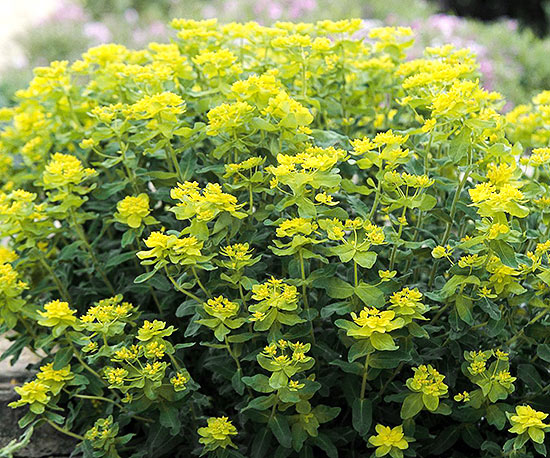
Cushion Spurge
Though cushion spurge is often grown in full sun, it does tolerate shade, especially in hot-summer areas. Like bigroot geranium, it's usually avoided by deer and rabbits.
In spring, cushion spurge bursts into bloom, producing tiny chartreuse flowers surrounded by showy bracts (much like its relative, the poinsettia, offers showy pink, red, or white bracts around the little flowers). Once it's finished blooming, count on the mound of gray-green foliage to stay attractive through autumn, when it often turns a reddish color.
Cushion spurge is an especially resilient plant. It tolerates poor soils with ease and may perform better in consistently dry soil better than in average-moisture soil.
Learn more about spurge.
Hellebore
Hellebore, sometimes also called Christmas or Lenten rose because of its early bloom season, is one of the toughest shade-loving plants around. With thick, almost leathery leaves, it's easy to see why. Hellebores are evergreen perennials in mild-winter climates; in the coldest areas they grow, the foliage usually dies back during the winter. Because all parts of this plant are highly poisonous, it's very resistant to deer and rabbits.
Hellebore flowers appear in shades of white, cream, yellow, green, red, and purple, and the blooms can be single or double. Hellebore is a fantastic companion for spring-blooming bulbs, such as daffodils.
Dry soil is no problem for hellebores, but they'll grow faster and bloom better in moist, well-drained soil that's rich in organic matter.
Learn more about hellebores.
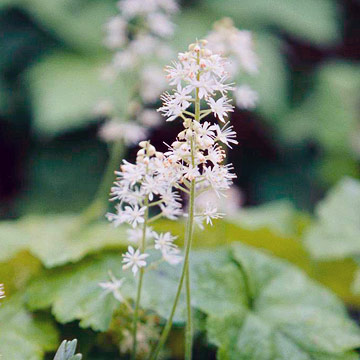
Foamflower
Foamflower is a delightful North American native plant that can spread quickly with runners to form a fairly dense mat of foliage. In spring, it produces little frothy wands of white or pink flowers that are a wonderful accent to spring-blooming bulbs, such as daffodils.
There are some fun varieties available, such as 'Running Tapestry', which features a purple blotch in the center of the leaves, and 'Susquehanna', which has lobed leaves heavily marked in dark purple.
While foamflowers will tolerate dry conditions, they'll spread more slowly than in moist conditions, and their leaves may develop brown, crispy edges. Keep them happy by incorporating an abundance of organic matter in the soil if you're planting them in dry shade.
Learn more about foamflowers.
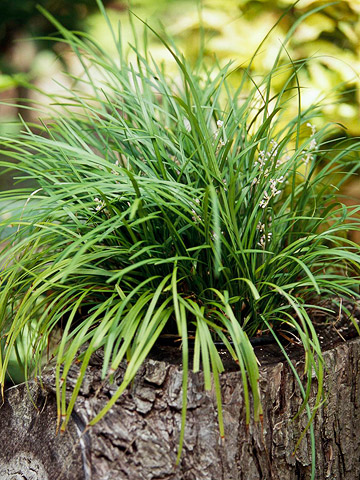
Lilyturf
At first glance, it's easy to mistake lilyturf for an ornamental grass because of its rich green, glossy, grass-shape foliage. However, it's actually a member of the lily family and more closely related to hostas. Like hostas, it's ultra tough, looking good through spring, summer, and fall (as well as winter in the South, where it's an evergreen).
There are a handful of varieties of lilyturf available; some, such as 'Silver Dragon', offer white-edged leaves. In late summer, the plants produce clusters of small lavender-purple blooms that may turn into small black fruits.
Lilyturf is highly adaptable to a range of conditions, such as dry shade, but it also can grow in mostly sunny spots if it has consistently moist soil. Lilyturf is deer and rabbit resistant.
Learn more about lilyturf.
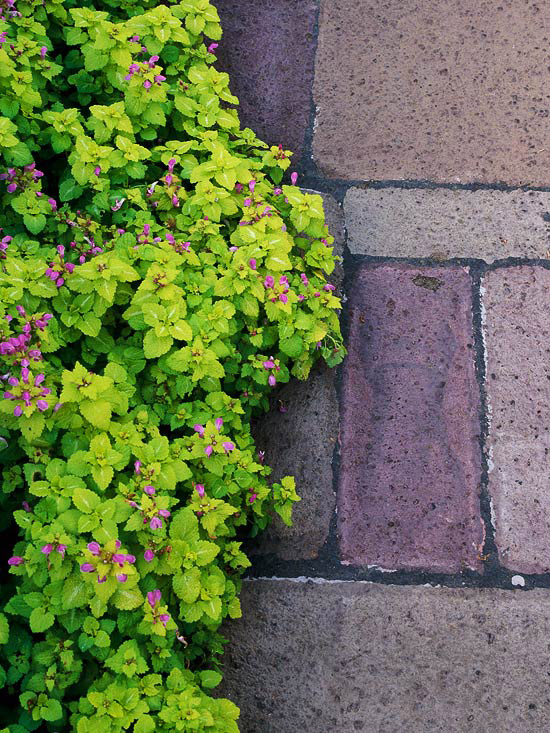
Deadnettle
Another top groundcover for dry shade, deadnettle (also called lamium) shows off attractive foliage that's often marked with silver. It blooms on and off throughout the summer, producing clusters of lavender, pink, or white flowers.
Deadnettle varieties that have fun foliage offer the most bang in the garden: 'White Nancy' has mostly silver leaves edged in green and white flowers, 'Cosmopolitan' shows off silver leaves and pink flowers, Golden Anniversary ('Dellam') bears green leaves streaked in silver and edged in gold.
Deadnettle can spread quickly to form a dense groundcover. It thrives in moist, shaded spots but can handle dry soil well. If the soil stays too dry for extended periods, leaves may develop brown edges. If this happens, you can cut the plant back and it will sprout fresh new foliage.
Learn more about deadnettle.
Copyright © www.100flowers.win Botanic Garden All Rights Reserved